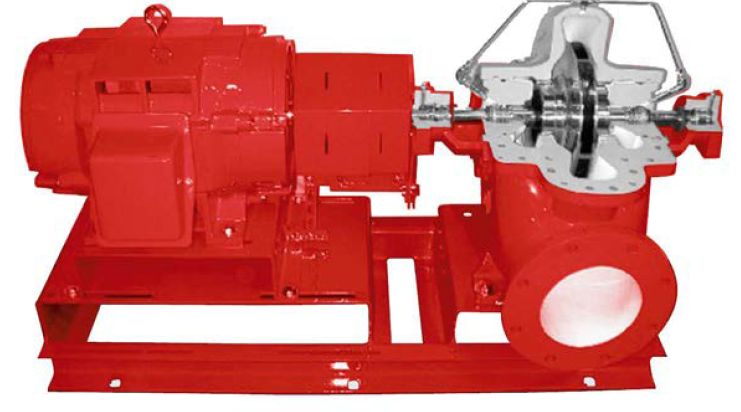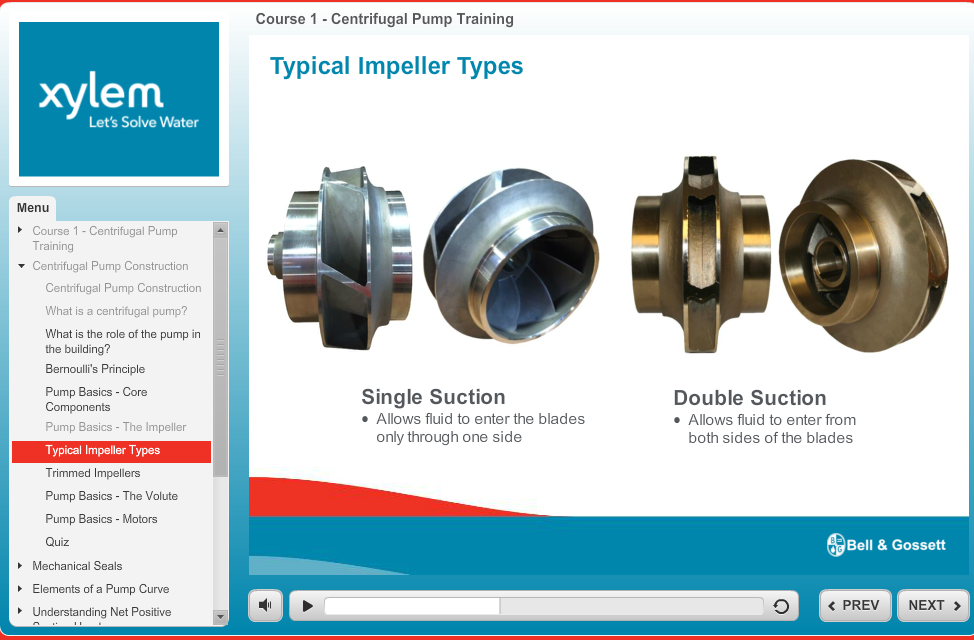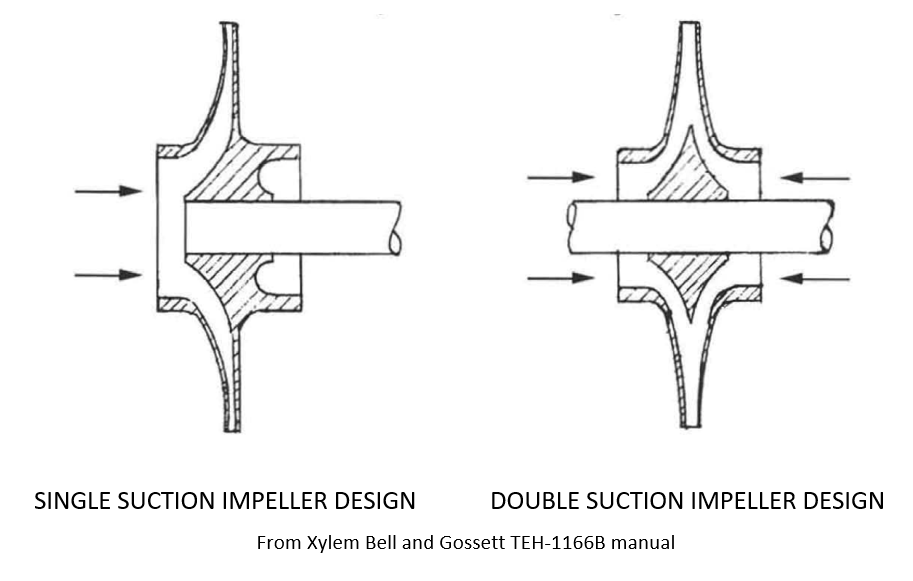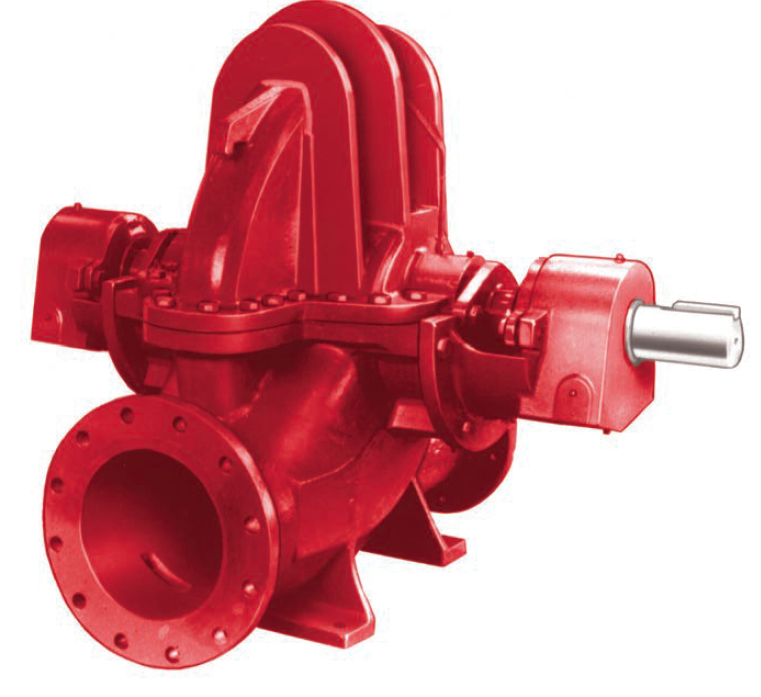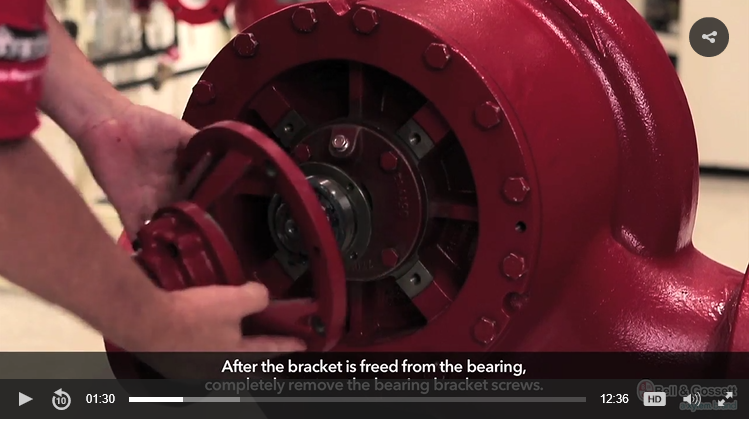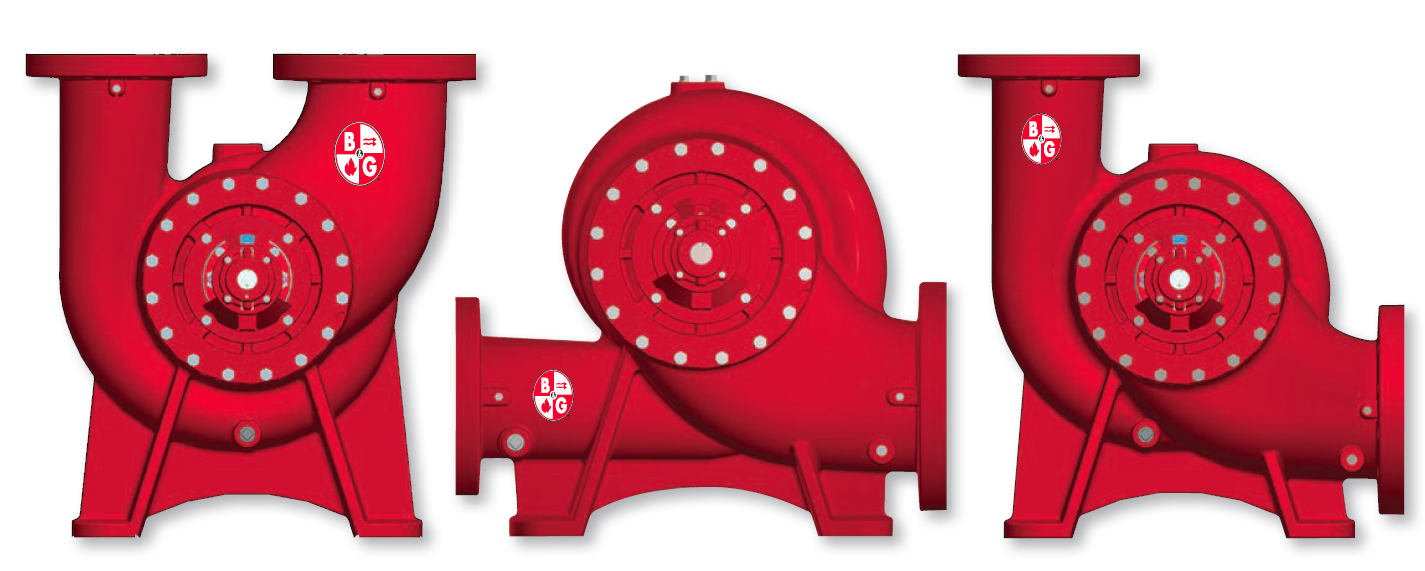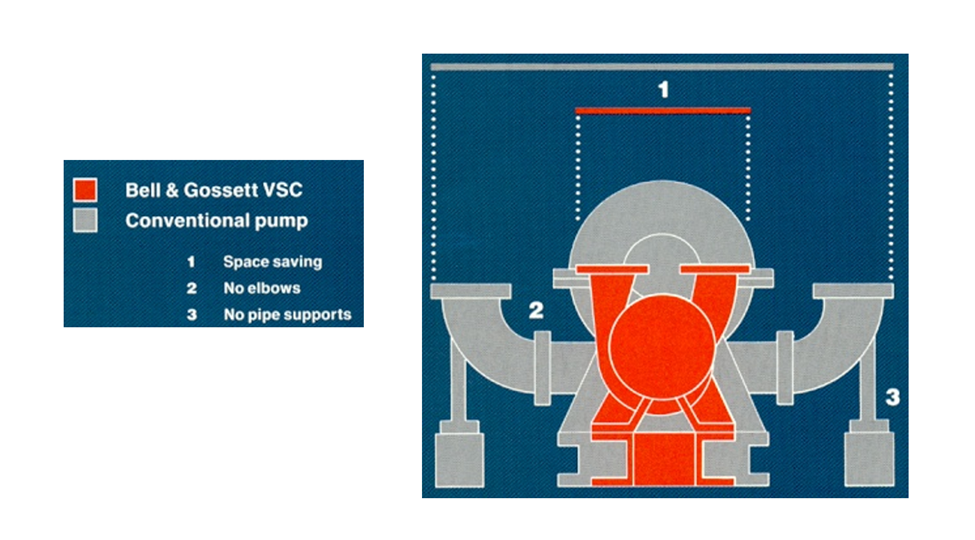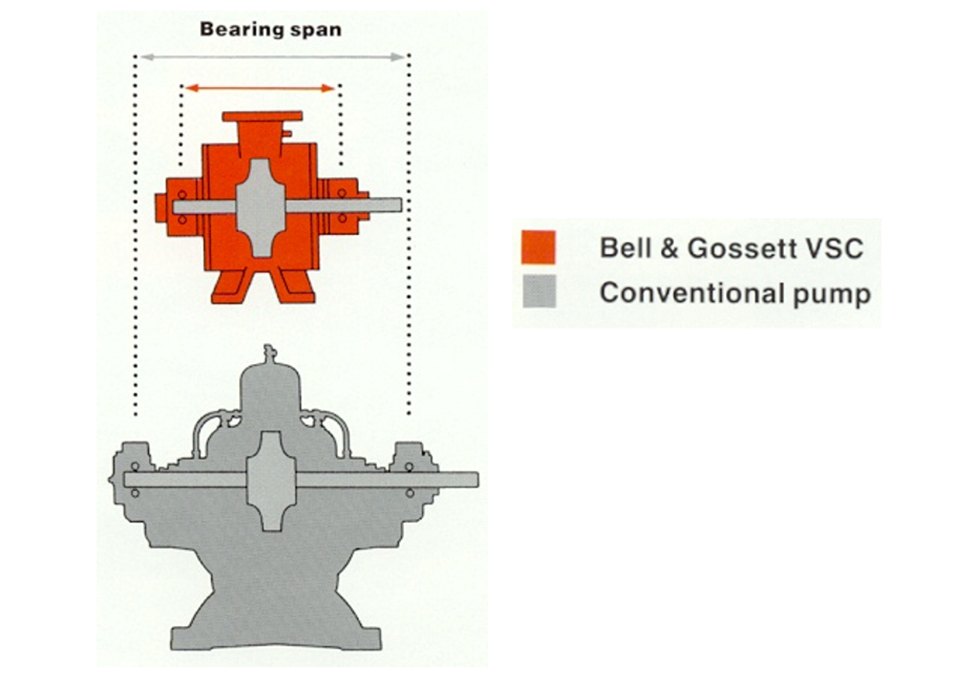Last week, the R. L. Deppmann Monday Morning Minutes described the differences between flex coupled HVAC pumps, split coupled pumps, and direct-coupled pumps. If the engineer decides to accept the owner benefits of a flexibly coupled pump, they may be faced with the choice of single or double suction. What are the differences between a single and double suction pump and what advantages does one have over the other? That’s what we are exploring this week.
Double Suction HVAC Centrifugal Pump Benefits
In a single suction centrifugal pump, water flows into the pump inlet and 100% of the liquid immediately flows into the eye or inlet of the impeller. The centrifugal action then creates pressure as the water exits the impeller through the veins. The central difference between a single and double suction pump is the latter has an impeller designed to draw flow through it from both sides. This double suction design splits the flow inside of the pump and sends 50% of the water through two “eyes.” This splitting or double suction design eliminates the axial forces on the impeller which allows for higher flows than single suction pumps.
The following is a screenshot from the Bell and Gossett online e-training program available for your use. If you have not viewed the B&G Little Red Schoolhouse Online classes, it may be worth a look.
Since the flow is split into two directions and the axial forces are balanced, double suction pumps are also less vulnerable to wear and tear. Since water enters both sides of a double suction impeller, one side effectively cancels out the axial thrust of the other. The pump still requires bearings for the shaft to ride on, and double suction pumps have inboard and outboard bearings to absorb the radial load. However, these bearings can afford to be smaller than single suction pumps simply because there is better balance across the shaft of a double suction pump.
Double Suction HVAC Centrifugal Pump Applications
We typically recommend a double suction pump design for HVAC applications around 2,000 GPM or an 8” pump size. When it comes to applying a double suction pump we adhere to a couple of recommendations:
- Select a pump with the shortest shaft span possible to minimize shaft deflections.
- Specify base-mounted pumps with flexible couplers whenever possible. These pumps are easier to service than double suction inline pumps, which require the motor to be removed for replacement of throttle bushings which periodically wear out.
Generally speaking, a double suction base mounted pumps can be twice the cost of a comparable single suction base mounted design. On the other hand, double suction pumps last longer. In HVAC applications, double suction pumps typically last as long as 30 to 40 years. This is the pump to use when your client expects to own the building for a long time and repair staff is at a premium.
Types of Double Suction HVAC Centrifugal Pumps
When it comes to selecting a base mounted double suction pump, there are 3 configurations to choose from, including:
Horizontal Split Case
These pumps have a “clam shell” type volute that is split horizontally across. The top part of the volute is bolted to the bottom. This design is definitely old school. It has been around for close to 100 years. Because the pump is split horizontally, there is significantly more service time and rigging required to lift the heavy top of the pump. Watch for very old specifications. Many people called double suction pumps “split case,” all of these pumps have split casings. It just depends on whether the case is split horizontally or vertically.
Vertical Split Case
Vertical split case pumps are split vertically with removable cover plates on the end that can be removed to service the bearings, seals, impeller, or pump shaft. Here is a shot from the Bell and Gossett service video.
Vertical split case pumps come in 3 different configurations as shown here, that can save floor space depending on the building piping configuration requirements:
Double Suction Inline
These pumps can be quite large and are typically double suction when the pump gets over 12” piping flange size.
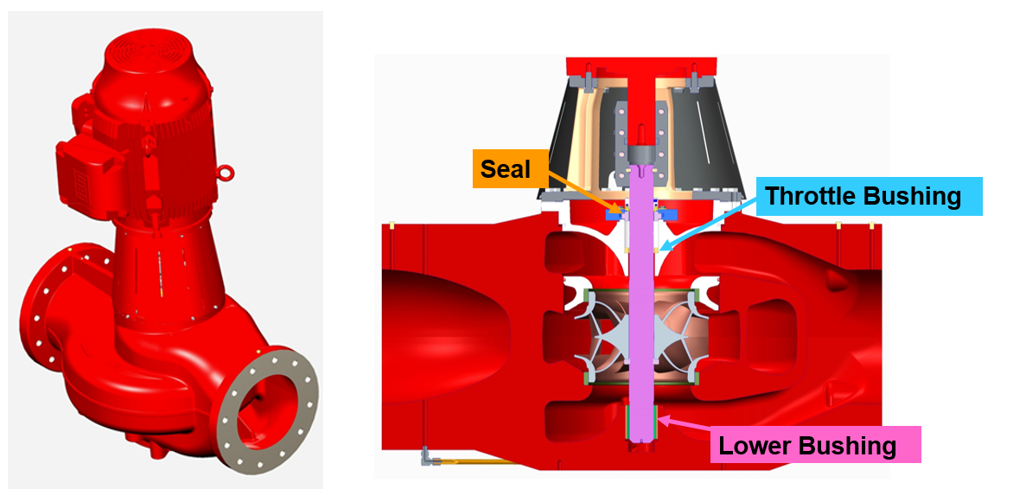
Double suction inline pumps have bushings instead of bearings, which should be inspected whenever the pump seal is serviced. Normally this inspection occurs frequently with this style of pump, as they are susceptible to wear and tear. This is significant because the motor of these pumps must be lifted off the top to change out the bushings, or to service the pump seals.
Vertical Split Case vs. Horizontal Split Case Pump
A very good case can be made for choosing a vertical split case pump over a horizontal split case pump. First, vertically split case pumps can and often do take up far less space, depending on the orientation of the pipe connections. Assuming the suction and discharge piping can be vertical, it’s easy to see from the following diagram why this is so:
Second, the shorter distance between the bearings on a vertical split case pump helps reduce shaft deflection and thus helps lengthen the life of the pump:
What’s the takeaway of all this? When higher capacities are required, double-suction pumps can be a long-lasting solution. Double suction pumps come in a variety of configurations to accommodate various piping connections. Vertical split case double suction pumps are more space efficient than horizontal split case double suction pumps – especially when the discharge and suction piping comes vertically from above. Double suction inline pumps are also an option, but are only available in very large sizes. The weight of the motors (which must be lifted away) makes servicing these pumps problematic.
Check out Part 6 where we talk about pump seals!
Read the Entire How to Pick an HVAC Centrifugal Pump series:
- Part 1: Designing for Owner Satisfaction
- Part 2: Types of Pumps and Seismic Considerations
- Part 3: Mechanical Room Space & Type of Pump Selected
- Part 4: Pump Coupling Types — Close, Split or Flexible Coupled?
- Part 5: Choosing a Single or Double Suction Pump
- Part 6: Internally Vs. Externally Flushed Mechanical Seals
- Part 7: Mechanical Seal Materials
- Part 8: Motors for HVAC Centrifugal Pumps (Continued)
- Part 9: Over speeding HVAC Pumps & Motors
- Part 10: Over Speed an HVAC Pump using a VFD
- Part 11: Best Practices for Safety and Performance

